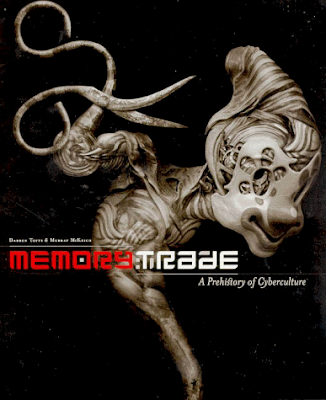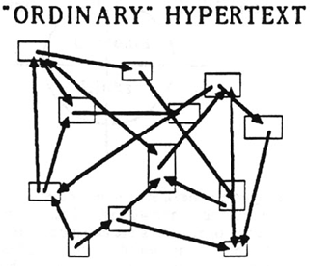Memory Trade: A Prehistory of Cyberculture by Darren Tofts & Murray McKeich.

The above book Memory Trade: A Prehistory of Cyberculture, is full of digital illustrations of bodies by Murray McKeich that are part Svankmajer, part Giger and part Tetsuo: both surreal and technofetishist in nature.
Chapter 3: Total Recall.
"The appeal of recollection is this jump by which I place myself in the virtual" - Gilles Deleuze.
This chapter deals with the technology of writing as an extension of human memory. It gives us a history of technologies: from the ancient Egyptians and the Greeks: the Socratic complaint about logocentrism; to the the calculating machines of Liebeniz and Babbage.
Vanervar Bush

Memex (1945)
"He [mankind] has built a civilization so complex that he needs to mechanize his records more fully if he is to push his experiment to its logical conclusion and not merely become bogged down part way there by overtaxing his limited memory."Ted Nelson

Hypertext was coined by the researcher Ted Nelson to define writing done in a non-linear or consequential verbal structures made possible by the computer. The use of hypertext would produce an essay or story that would offer multiple paths of alternate paths in linking segments. Literature in Nelson's mind is characterized as a system of interconnected documents.
Hypertext presents cultural artefacts that are interactive, that is pluralistic in its discourse and polyvocal, freeing the reader from the dominance of the author. Hypertext enables scholars to find linkages through tracing keywords through single books and whole bodies of scholarship.

No comments:
Post a Comment